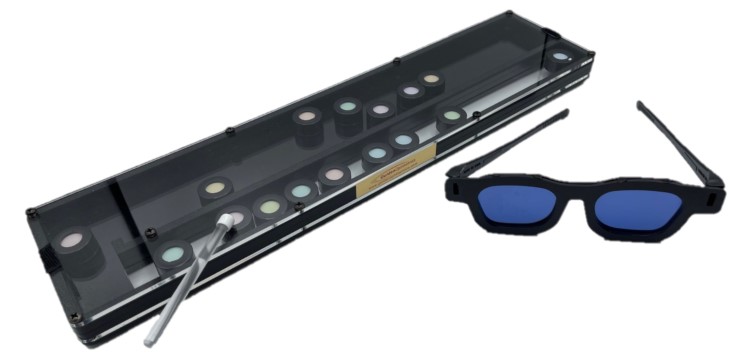The test is comprised of numbered colored discs housed in a compact sealed plastic box that measures 16.75 inches by 4 inches. The desaturated test is much more difficult to correctly complete than the Farnsworth D-15. It is a much more sensitive test.
The test is easy to administer. Patients simply use a magnetic stylus to arrange the discs in the correct color order as they perceive it and the arrangement is then evaluated. Patients with color perception deficiencies (“color blindness”) will have difficulties trying to arrange the colored discs and will usually make mistakes.
The evaluation of the patient’s arrangement differentiates normal color perception from congenital or acquired moderate and strong defects in deutan (green and green weak blindness), protan (red blindness) or tritan (blue-yellow blindness) color discrimination. Based on the mistakes the type of color blindness as well its severity can be calculated. The tests can be used for occupational evaluation and classification.
A convenient snap-on cover protects the discs from fading due to sunlight and ambient light. The kit includes a magnetic stylus, score sheet, and a pair of “C” daylight glasses. These glasses have special filters which transform normal incandescent light to “Illuminant C” type illumination, the proper light setting for the administration of color tests.

